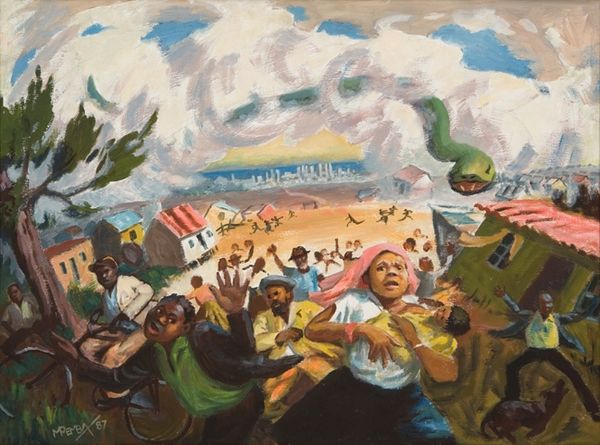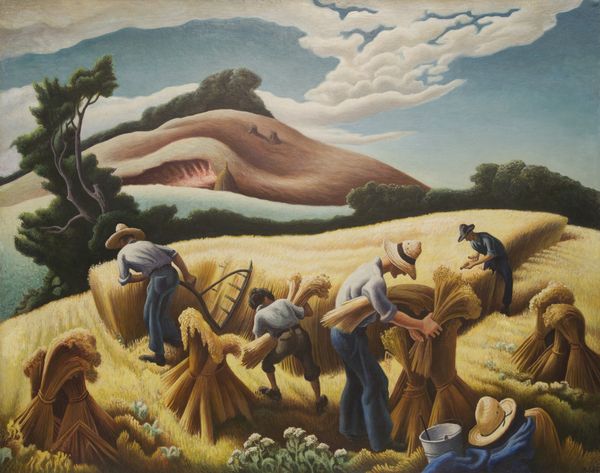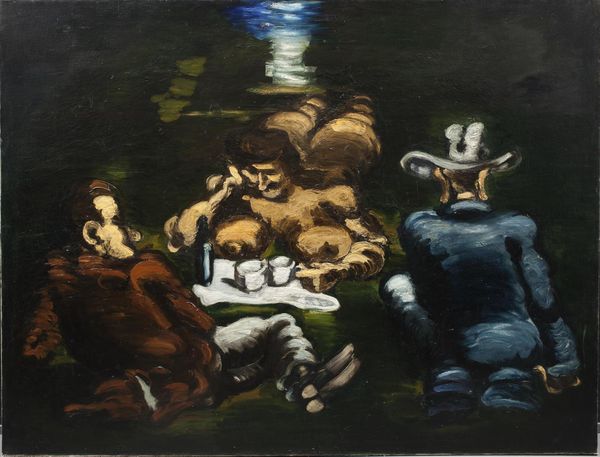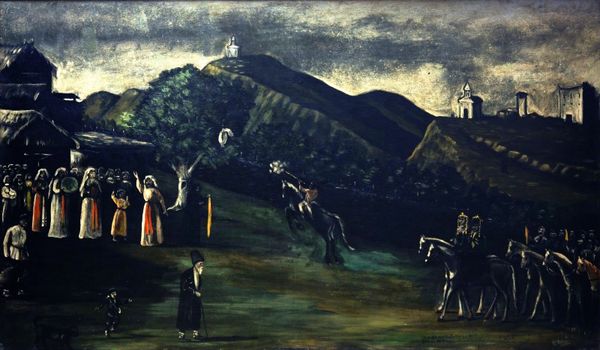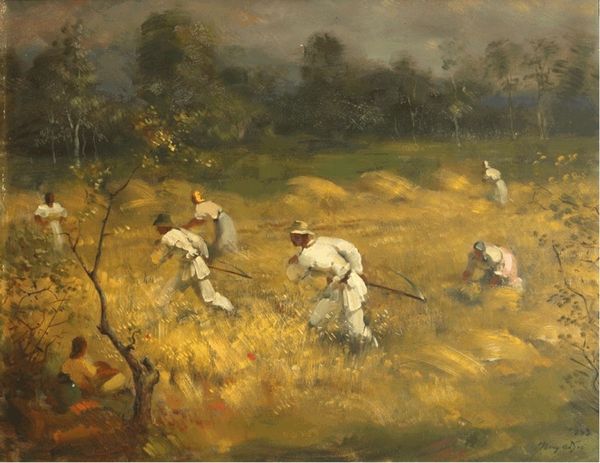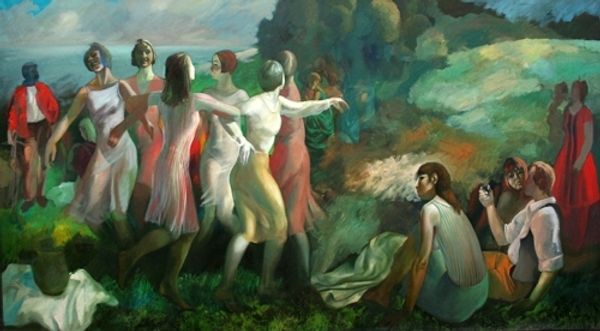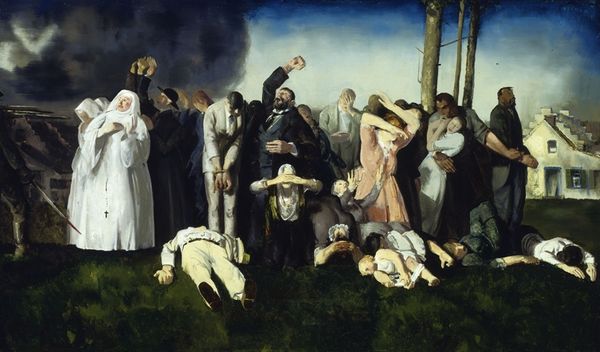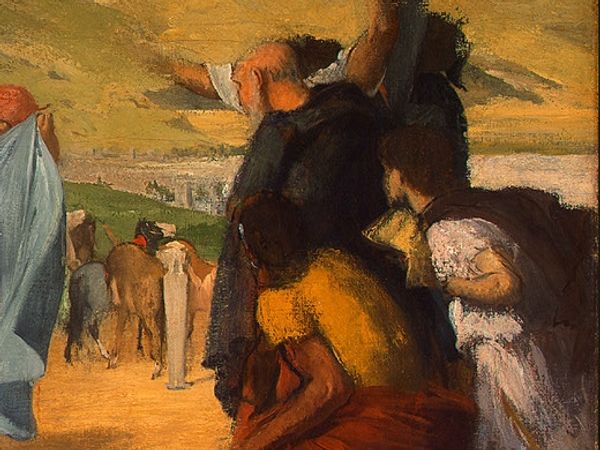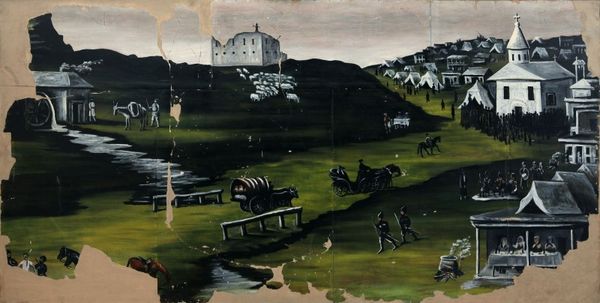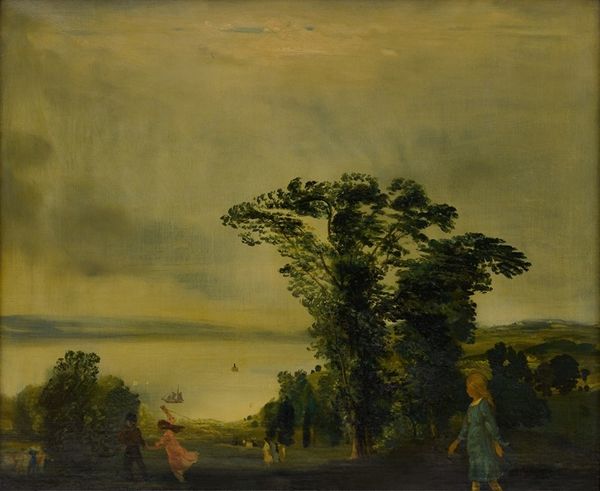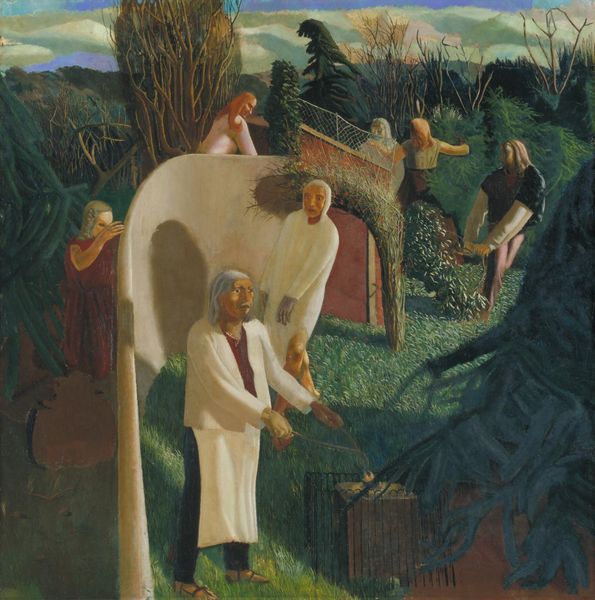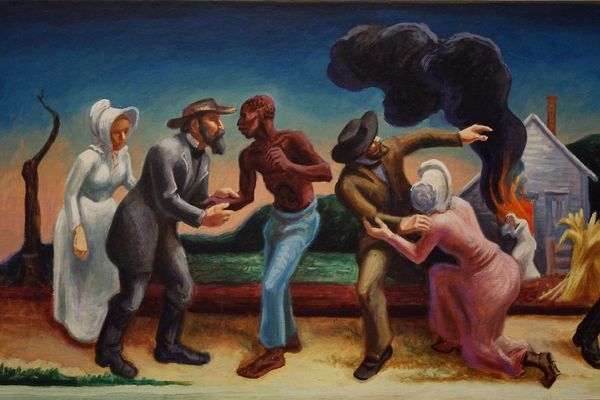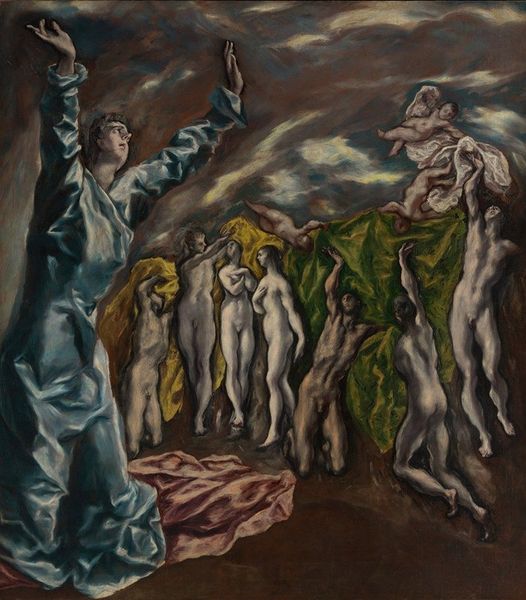
oil-paint
#
oil-paint
#
landscape
#
figuration
#
oil painting
#
surrealist
#
surrealism
Copyright: Richard Oelze,Fair Use
Editor: The air in Richard Oelze’s 1936 oil painting, "The Expectation," feels thick with suspense, doesn't it? What’s your take on it? Curator: Yes, an immediate stillness strikes the eye, despite the impending storm visually coded in the background; it almost paralyzes the viewing experience. Note how Oelze deployed a monochromatic, restricted palette – sickly green, soiled white, ashen gray –to subtly emphasize formal relationships above all else. Editor: Absolutely. These muted tones lend the crowd a haunting, almost spectral presence. Are we seeing, perhaps, a reference to some deeply-rooted anxieties, symbolized through the gathering? Curator: Conceivably, although I prefer to address it from the composition viewpoint. Observe how the mass of figures merges into a horizontal line at the base, contrasting against the towering storm overhead. This contrast in vertical scale adds layers to a basic foreground-background structure, providing symbolic elements based purely on scale. Editor: An interesting point. From an iconographic standpoint, gatherings often represent collective unconsciousness or shared destiny. Could the figures' averted gaze into the landscape signify an unknown future, loaded with psychological expectation or even dread? Curator: That relies too heavily on conjecture for my sensibility, however I must agree on the effect of an ‘unknown future’, and must grant that a dread might be triggered given that color scale is used to make a perfect symbiosis with the topic. My primary concern is with how these ideas come into being through line, light, and texture—the semiotic framework, if you will. For instance, there’s something decidedly *off* about the smooth texture of their cloaks compared to the scumbling effect employed across the stormy sky. It is by this divergence alone that we perceive dread. Editor: That contrast certainly contributes to the unsettling mood, as if reality itself is fraying. A collective gaze awaiting an external event could highlight humanity's susceptibility to manipulation or collective delusion… don’t you think? Curator: You speak as though "humanity" were a cohesive subject. It is this subjectivity to begin with what needs an approach; in any case the answer would remain in the use of textures! Consider this more so when you compare those specific figures to a wider variety and scale such as a mass following political or ideological flags during this historic turn of events, then texture matters far less... Editor: That’s true, but in my interpretation Oelze is reflecting, consciously or otherwise, Europe’s unease on the cusp of World War II, translating the anticipation into something ominous, internalized… Curator: Or consider perhaps just a masterfully executed arrangement of visual forms interacting with the space on the canvas. But alas, your psycho-historical reading of such pictorial content—while perhaps insightful—does rather eclipse the painting’s structural significance for me. Editor: Perhaps it's in the fusion of form and implied narrative where its power lies. Food for thought, indeed.
Comments
No comments
Be the first to comment and join the conversation on the ultimate creative platform.
